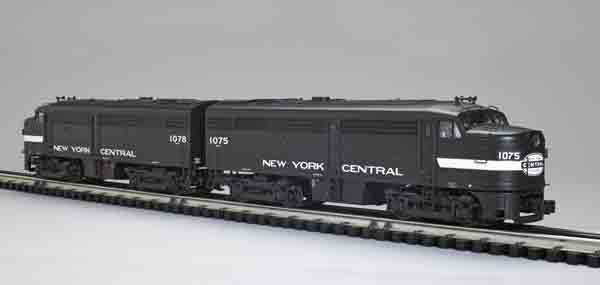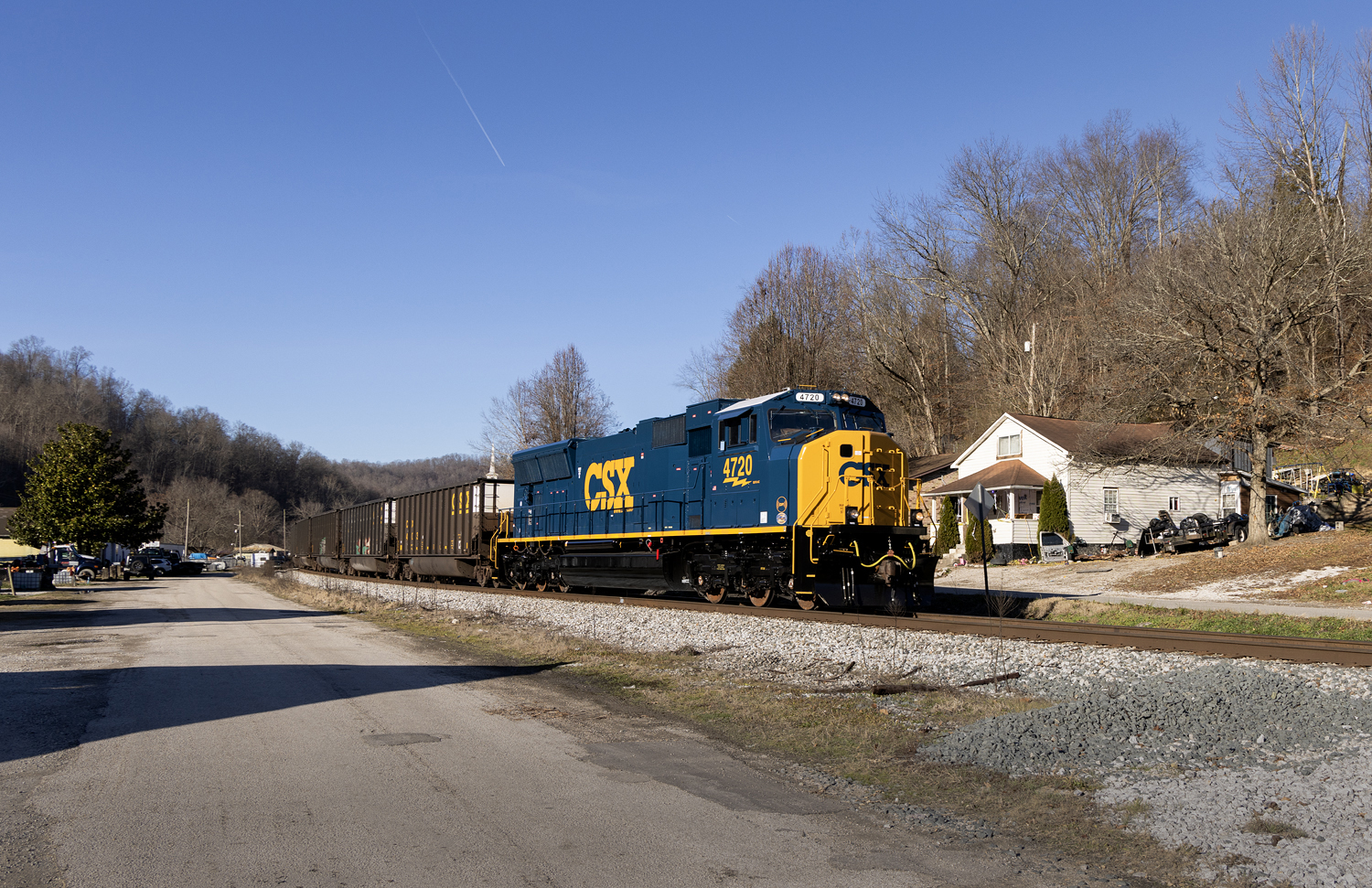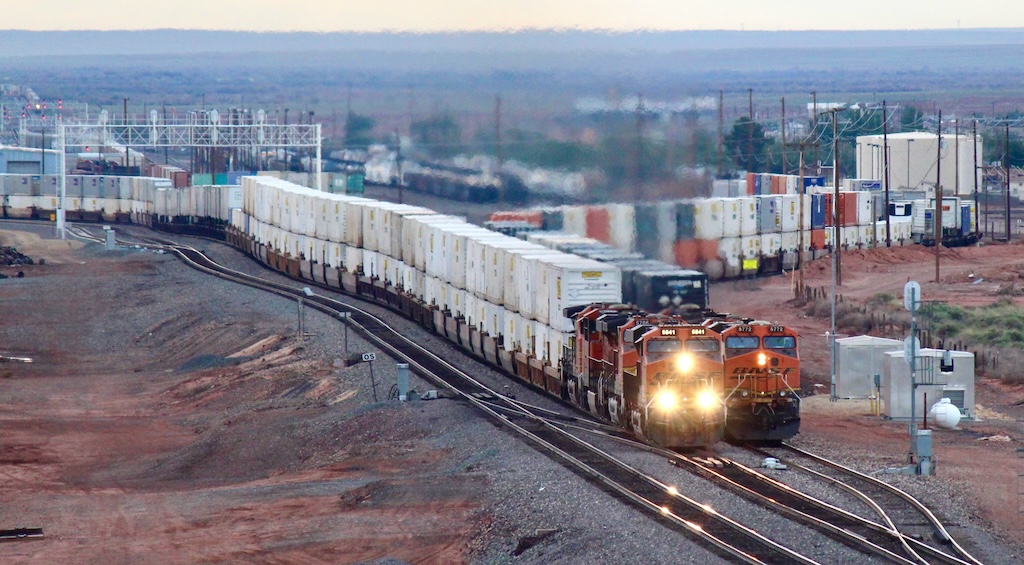Price: $749.99 (no. 81516 A-A set) Min Curve: O-36 Cmd Low: 2.38 smph Conv Low: 2.71 smph, High: 72.7 smph, Drawbar Pull: 1 lb., 9 oz.
Features: Powered and unpowered units each with a fan-driven smoke unit, can-style motors, coil couplers on noses, Lionel’s Legacy command and sound system. Current production road names: Baltimore & Ohio, Erie, New York Central and Pennsylvania RR.
Electro-Motive Division F3s, by contrast, seemed haughty and just glided past. Working Joe versus Queen of Sheba. Like that famous car rental company, the Alcos looked they were number two in the cab-unit race, and so they were trying harder!
Between 1946 and 1959, Alco and its Canadian partner, Montreal Locomotive Works, produced more than 1,300 of all versions (FA-1 to FPB-4) of this boxy 1,500-horsepower hauler.
In the real world, I wouldn’t call the FA a failure at all, but it wasn’t the success that Alco envisioned and never reached the potential the locomotive possessed. As J. David Ingles observed in his two-part article, “The diesel that didn’t quite do it” (June and July 1975 Trains magazine), Alco and the FA could not compete against EMD because “no one could touch the dominance of the LaGrange firm. The other, more important reason: The FA2 (as well as the shark, the C-Liner, and even the later F9) was just too late to the party.”
Opening the box
This O gauge set is comprised of two Alco FA cab units, one powered and the other unpowered. With the exception that the unpowered unit has no crew in the cab, both are visually the same.
While the pilot is a smooth, rounded hunk of metal with cast-in steps, the detailing from the bottom of the frame and higher knocked my socks off. The first thing getting a reverent “wow” was not that the FA had grab irons on the engineer’s side of the nose, but that the grab irons were bent down into a shape to offer a better toehold for boots! So I immediately began to look for similar add-on details – and I found them.
The nose is smoothly arched back, and the familiar square headlight frame crowns the front. The boxy number boards extend out from the shell, and just above them are recessed classification/marker lights.
The New York Central’s cigar band logo covers the nose access hatch, and you’ll find grab irons on both sides of the door. Grab irons are on the curves of the nose just above the pilot and can also be found above the front cab windows.
The shell wonderfully captures key detail points of the Alco. The cab doors open and have square windows. There are also add-on steps and long grab irons for crew access. The mid-body doors open and feature long rails, an add-on step, and a round porthole.
Below the doors there are truck-mounted steps on the front truck and frame-mounted steps in the middle. At the rear of the cab are steps for hostlers/brakemen. These have grab irons; below are frame-mounted steps that arch downward and slightly outward.
Running along the upper body are add-on, see-through screens. They allow you to see cast-in structural support detailing.
Topside you find some nice fastener detailing, an add-on vent, five lift rings, and a round, see-through screen covering an add-on three-bladed fan. The exhaust for the smoke unit is about halfway back from the cab.
A surprising detail appears on the rear of the locomotive: a plastic diaphragm and the simulated support structure for it. There is a door – which opens – flanked by grab irons on both sides.
A light-emitting diode (LED) is positioned in the alcove to ensure safety in the dark. Last but not least in the unexpected grotto of detailing is an add-on piece of piping that appears to be part of a cooling system. Nifty!
The black B-B trucks look great and have brake pad, pneumatic, and spring detailing.
The paint application was even and flat everywhere on the O gauge duo. Of special note is the white stripe and emblem over the nose.
The small data bits applied over the body, such as fuel shut off, fuel oil fill, DFA-7B, and, of course, the Alco builder’s plate, are clear and crisp.
On the test track
This model packs a sound that will knock your socks off. The source audio captures Alco’s cranky, too-old-to-move sound, and the metallic squeaks and groans at low speeds (when they will best be heard) are second to none.
The two motors in the powered unit were smooth and powerful in all speed ranges, conventional or command.
Smoke output varied a bit. At one point we received the blinking cab light error message indicating a problem requiring a reset. Just as it is supposed to do.
This Lionel Legacy model looked and sounded great. Its performance numbers were solid as well. Our conventional low-speed average was 2.71 scale miles per hour, and the command low-speed average was 2.38 scale mph. Our high-speed average was 72.7 scale mph.
Drawbar pull was 1 pound, 9 ounces.
These diesels were fun to operate, and I can’t think of a thing that will fall into the “They should have done” category.
In the real world, the Alco FA and its kin may not have won the day, but they did win the hearts of fans, because roughly 20 are preserved around the world. But you don’t need to work up a sweat to track one down to add it to your O gauge fleet. Just check your local hobby shop!














